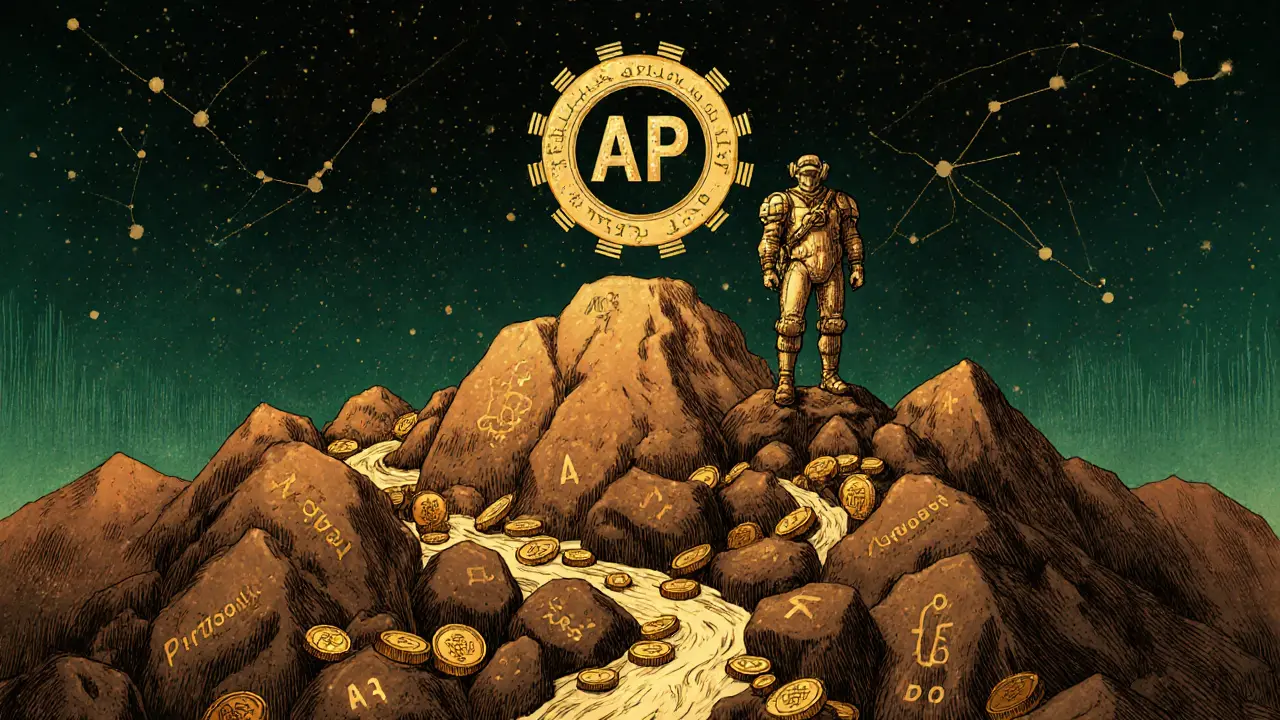Imagine storing your most important digital files-your family photos, NFTs, DAO voting records, or even your life’s work-so they last forever. No server crashes. No corporate shutdowns. No forgotten cloud subscriptions. That’s the promise of decentralized storage. But not all systems are built the same. IPFS, Arweave, and Filecoin all claim to offer a better way to store data on the blockchain, but they’re like three different tools in a toolbox: one’s for quick access, one’s for permanent archiving, and one’s for flexible, contract-based storage. Choosing the wrong one could mean losing your data-or paying way too much for it.
What Is IPFS, Really?
IPFS, or InterPlanetary File System, isn’t a storage network. It’s a way to find files, not keep them. Think of it like a library catalog that tells you where a book is, but doesn’t own the shelf. When you upload something to IPFS, it gets a unique hash-like a fingerprint. Anyone on the network can find and download it if someone is actively keeping a copy. But if no one pins it, the file vanishes. It’s not stored; it’s shared.
That’s why most people don’t use IPFS alone. You need something to pin your data. Services like Pinata or Infura do this for you-for a fee. Pinata charges $0.50 per GB per month for reliable pinning. That’s fine for small projects, but if you’re storing 10TB of video archives, you’re looking at $5,000 a year just to keep it alive. And if Pinata shuts down? Your files disappear. IPFS is fast-50 to 150ms retrieval for pinned content-but it’s not permanent. It’s a delivery system, not a vault.
Arweave: Pay Once, Store Forever
Arweave flips the script. Instead of monthly fees or pinning services, you pay once. In 2025, it costs about $3,500 to store one terabyte permanently. Yes, that sounds expensive. But here’s the catch: it’s meant to last 200 years. Not 20. Not 5. Two hundred.
How? Arweave uses a clever trick called the ‘endowment model.’ When you pay, part of your fee goes to miners who store your data. The rest goes into a fund that pays them forever-using interest from the AR token’s value. It’s like putting money in a savings account that pays the next generation of miners to keep your file alive. No renewals. No contracts. Just set it and forget it.
That’s why 78% of top NFT collections use Arweave for metadata. If your CryptoPunk’s image disappears, it’s worthless. Arweave makes sure it doesn’t. The network has over 8,000 nodes and stores 130+ TiB of permanent data. Retrieval takes 200-400ms-slower than IPFS, but reliable. And because Arweave replicates data 100 to 1,000 times across the network, it’s incredibly resilient.
But it’s not perfect. The upfront cost is a barrier. You can’t afford to store 10TB for $35,000 unless you’re a DAO or an archive. And while Arweave’s node count is growing, it’s still tiny compared to IPFS’s 1.2 million nodes. If a major country bans it, there’s less redundancy to fall back on.

Filecoin: The Storage Marketplace
Filecoin is IPFS’s economic cousin. Built by the same team, it adds a market to the protocol. Instead of relying on goodwill, Filecoin turns storage into a business. Miners bid to store your data. You choose who to hire, how long, and how many copies you want. Then you pay monthly-$200 to $1,000 per terabyte per year, depending on your needs.
This flexibility makes Filecoin the go-to for businesses. AI companies use it to store training datasets. Video platforms use it for temporary backups. It’s used by 67 Fortune 500 companies for non-permanent storage. The network has 14 EiB of capacity-over 14 million gigabytes-and 3,500+ active storage providers.
But here’s the downside: you have to manage it. Filecoin miners must prove they’re still storing your data every 24 hours using Proof of Spacetime. If they fail? You lose your data, and they get slashed. In Q2 2025, $2.8 million in FIL was lost by miners who missed these proofs. One Reddit user spent 30 hours a month just managing deals before giving up and switching back to AWS.
Setting up a Filecoin miner is also brutal. You need 128GB RAM, 32TB of storage, and a powerful CPU. Most users don’t run their own nodes-they pay providers. But even then, you’re locked into contracts. Forget to pay for six months? Your files vanish. No second chances.
Who Wins? It Depends on What You Need
Let’s cut through the noise. Here’s who should use what:
- Use Arweave if you need data to last forever. NFTs, DAO records, historical archives, legal documents, or personal digital legacies. Pay once. Sleep easy.
- Use Filecoin if you need flexible, scalable storage for temporary or changing data. AI training sets, video backups, development environments, or large datasets that get updated often. Pay monthly. Stay in control.
- Use IPFS if you’re building an app and need fast, content-addressed access to files-but only if you’re already using Pinata, Infura, or another pinning service. Don’t use it alone.
And here’s the truth: these aren’t competitors. They’re teammates. Most serious Web3 projects use IPFS to access files, Filecoin to store them temporarily, and Arweave for the things that must never disappear. The Filecoin and IPFS teams even announced a unified ecosystem in April 2025. That’s not a merger-it’s a strategy.

Real Stories, Real Problems
A DAO in Berlin moved all its governance votes to Arweave in 2024. They spent $1,200 to archive 400GB of proposals and votes. Eighteen months later, uptime is 99.999%. No one has to pay a bill. No one has to check if the server’s still up.
Meanwhile, a startup in Austin used Filecoin to store 5TB of AI training data. They saved 60% compared to AWS. But when their developer left, no one knew how to renew the storage deals. Three months later, the data was gone. They lost $120,000 in training time.
And on the IPFS side, over 127 GitHub issues in Q1 2025 came from NFT projects whose metadata vanished because their pinning service dropped them. One project lost 12,000 NFTs. The community was furious. The fix? Move to Arweave.
What’s Next?
Arweave’s Permavision upgrade in March 2025 cut storage costs by 18% using AI to optimize redundancy. Filecoin’s FVM smart contract layer in January 2025 let developers build automated storage deals-like auto-renewing contracts. IPFS is adding quantum-resistant encryption to its core stack by late 2025.
But the biggest threat isn’t tech. It’s regulation. The EU is debating whether permanent storage like Arweave should be allowed to host illegal content. Filecoin’s contract model is under SEC review-is storing data a security? Meanwhile, a new competitor, Walrus, is coming in Q3 2025 with $50/terabyte/year pricing using erasure coding. That could shake up the whole market.
For now, the choice is simple: if you want permanence, pay once with Arweave. If you need flexibility, use Filecoin. If you’re building something fast, use IPFS-but never alone.
Can I use IPFS without paying anything?
Yes, you can upload files to IPFS for free. But without a pinning service like Pinata or running your own node, your data will disappear within days or weeks. IPFS doesn’t store files-it only helps you find them if someone else is keeping them. So while the protocol is free, reliable access isn’t.
Is Arweave really permanent, or is it just marketing?
It’s real. Arweave’s endowment model is designed to pay miners forever using interest from the AR token’s value. The math has been audited by blockchain economists. While no system is 100% guaranteed, Arweave’s design ensures that as long as the AR token has value and miners participate, your data stays. Over 130 TiB of data is already stored permanently. NFT projects and archives are betting their digital legacies on it.
Why is Filecoin so complicated to use?
Because it’s a marketplace, not a service. Filecoin requires miners to prove they’re storing your data every day using complex cryptographic proofs (PoSt). If they fail, they’re punished. For users, this means managing storage deals, choosing providers, and renewing contracts. It’s powerful, but it’s not plug-and-play. Most users outsource this to providers like Filecoin Storage Providers (FSPs), but even then, you need to monitor your deals.
Which one is cheapest for long-term storage?
For storage lasting 10+ years, Arweave wins. A one-time $3,500 fee for 1TB is cheaper than paying $500/year for 10 years ($5,000 total). Filecoin’s annual pricing adds up fast. IPFS with Pinata costs $600/year for 1TB-so over 10 years, that’s $6,000. Arweave’s upfront cost is high, but it’s the only one that doesn’t require ongoing payments.
Can I switch from Filecoin to Arweave later?
Yes, but you’ll need to re-upload your data. There’s no direct migration tool. You download from Filecoin and upload to Arweave. This costs time and money. That’s why many projects plan their storage strategy upfront. If permanence matters, start with Arweave. If you’re testing, start with Filecoin and migrate later.
Is Arweave safe from government censorship?
It’s more resistant than centralized services, but not immune. Because data is replicated across thousands of nodes globally, shutting it down would require coordinated action across many countries. However, regulators are already debating whether permanent storage violates laws like the EU’s Digital Services Act. Arweave can’t delete content-even if legally required-so it faces legal risks. That’s why some organizations use it only for non-sensitive, public data.

Chloe Jobson
October 29, 2025 AT 11:24Arweave is the only sane choice for NFT metadata. I’ve seen too many projects lose their art because someone forgot to renew Pinata. Pay once, forget it. No more sleepless nights.
Andrew Morgan
October 30, 2025 AT 19:22Filecoin is a nightmare honestly
One guy on my team spent 30 hours a month just managing deals
Then he quit
Now our whole AI dataset is gone
Like wtf
Michael Folorunsho
October 31, 2025 AT 09:17IPFS is for hobbyists. If you’re not paying for pinning, you’re not serious. And Arweave’s $3500/TB is a luxury tax for people who can’t afford AWS but think they’re crypto gods. Real institutions use S3. End of story.
Roxanne Maxwell
November 2, 2025 AT 03:15Just wanted to say thank you for explaining this so clearly. I’m a digital archivist and I’ve been terrified about losing decades of family photos. Arweave feels like the only thing that gives me peace.
Jonathan Tanguay
November 2, 2025 AT 17:27Everyone keeps talking about Arweave like its magic but nobody mentions the 200 year thing is just a math model based on token appreciation which is literally a pyramid scheme and also the fact that the average node operator is running on a raspberry pi with a 2TB drive and if one country bans AR tokens the whole thing collapses and also the fact that the devs are based in a tax haven and have no legal accountability and also the fact that you cant even verify if your data is actually replicated 1000 times because the code is obfuscated and also
Ayanda Ndoni
November 4, 2025 AT 15:08Why are we even talking about this
Can’t we just use Google Drive
Free and works
Elliott Algarin
November 5, 2025 AT 21:43It’s funny how we treat storage like it’s a moral choice. Arweave for permanence, Filecoin for flexibility, IPFS for speed. But really it’s just about who you trust to hold your data. The blockchain doesn’t make it sacred. It just makes it harder to delete.
John Murphy
November 7, 2025 AT 18:38I tried Filecoin once
Had to set up a miner
128GB RAM
32TB drive
Then my power bill doubled
Gave up after a week
Now I use Pinata
Worth every penny
Zach Crandall
November 9, 2025 AT 12:18As a Canadian, I find it concerning that these decentralized systems operate without any legal oversight. What happens when a court orders the deletion of illegal content stored on Arweave? There is no mechanism. This is a regulatory time bomb waiting to explode.
Akinyemi Akindele Winner
November 10, 2025 AT 07:31Arweave? More like Arwaste. You pay $3500 to store a JPEG of a monkey with sunglasses? Bro, you’re the reason crypto got a bad name. I store my NFTs on my grandma’s USB stick. She doesn’t even know what blockchain is. But her data ain’t going nowhere.
Patrick De Leon
November 11, 2025 AT 16:16Filecoin is the only real solution. IPFS is a protocol not a service. Arweave is a cult. And anyone who says otherwise hasn’t run a production node. The EU will shut this down before 2026. Mark my words.
MANGESH NEEL
November 12, 2025 AT 19:11Why are people still using IPFS at all
It’s a dead protocol
Like fax machines
And Arweave is just a Ponzi where the miners are the suckers
And Filecoin is for people who like to do math homework for a living
And you all call this innovation
Pathetic
Sean Huang
November 14, 2025 AT 07:24Did you know that Arweave’s endowment model is secretly funded by the same people who run the Federal Reserve
They want to control all digital history
That’s why they made it look permanent
But every file you store is tagged with a backdoor
They can erase it with a quantum key
And no one will ever know
It’s all part of the Great Reset
They’re building the digital panopticon
And you’re all just handing them your photos
😭
Ali Korkor
November 16, 2025 AT 05:53Don’t overthink it. If you’re storing family pics or your kid’s first video? Arweave. If you’re running a startup and need to move data around? Filecoin. If you’re just testing? IPFS with Pinata. Simple. Done.
madhu belavadi
November 17, 2025 AT 19:29So what happens when AR token crashes
Then miners stop storing
Then your data disappears
So it’s not permanent
It’s just a gamble
Dick Lane
November 19, 2025 AT 16:49Filecoin’s slashing mechanism is brutal but fair. If you don’t monitor your deals, you deserve to lose your data. It’s not broken, it’s just not for lazy people.
Norman Woo
November 20, 2025 AT 02:50Arweave’s 200 year thing is fake
They just copy files to new nodes every 10 years
It’s not magic
It’s just copy paste
And if the whole network goes down
It’s gone
Like everything else
Serena Dean
November 20, 2025 AT 16:40For anyone new to this: start with Arweave for your most important stuff. It’s not cheap, but it’s the only one that actually lets you sleep. You’ll thank yourself in 10 years.
James Young
November 20, 2025 AT 19:18Stop acting like Arweave is the future. It’s a speculative bubble wrapped in blockchain hype. The only reason it’s still standing is because people are too dumb to realize they’re paying for vapor. Filecoin has real utility. IPFS is a tool. Arweave? A religion.